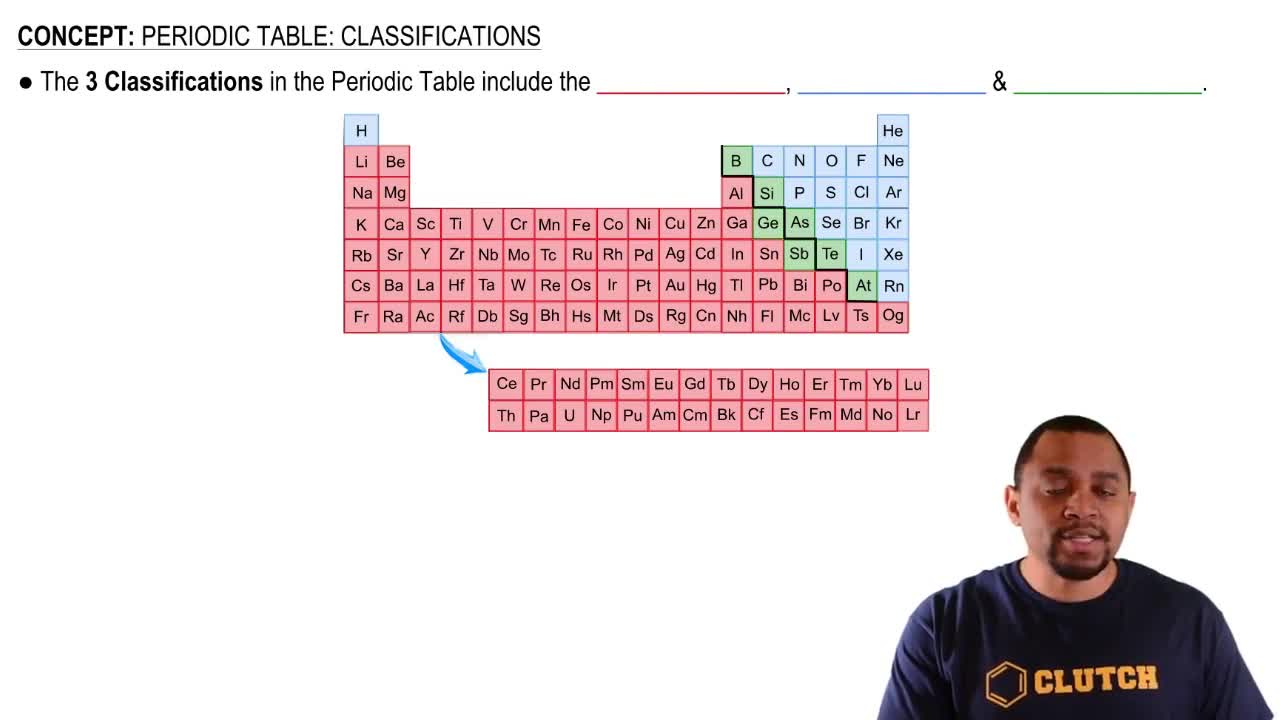Juan added the following elements to the soil to improve potato production. Identify the group and period for and classify each as an alkali metal, an alkaline earth metal, a transition element, or a nonmetal:
b. Cu
 Verified step by step guidance
Verified step by step guidance Verified video answer for a similar problem:
Verified video answer for a similar problem:



 5:33m
5:33mMaster Periodic Table: Group Names with a bite sized video explanation from Jules
Start learning